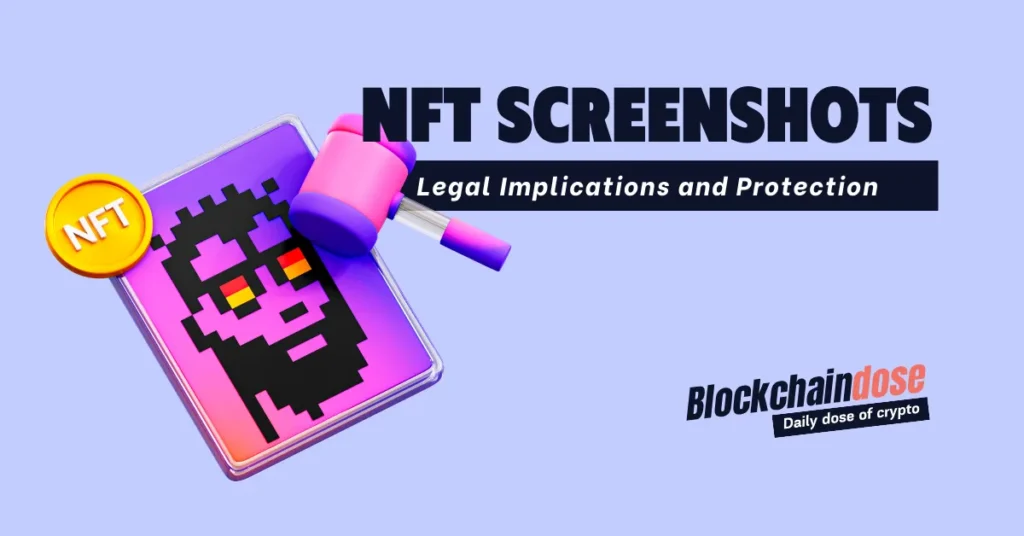Many individuals opt for third-party platforms to automate their trades in cryptocurrency trading. However, building a personal crypto arbitrage bot is a compelling alternative for those seeking greater control, increased security, and a departure from unnecessary limitations.
These bots, designed to save time and execute trades efficiently, surpassing human capabilities, are advantageous for avoiding redundant tasks and trading even during sleep hours. Furthermore, using a self-built bot can deepen your understanding of trading markets.
To empower you on this journey, here’s a comprehensive guide on how to build your crypto arbitrage bot step by step. By following these instructions, you can take charge of your trading strategy and gain insights into market dynamics while enjoying the advantages of automated trading.

- What Is Crypto Arbitrage Trading?
- Why Create A Crypto Arbitrage Bot?
- Types of Arbitrage Trading Bots
- How to Do Crypto Arbitrage Trading Bots Work?
- How to Build Your Crypto Arbitrage Bot
- Advantages of Building a Crypto Arbitrage Bot
- Cost Considerations for Building a Crypto Arbitrage Bot
- Building a Crypto Arbitrage Bot – Frequently Asked Questions
- Crypto Arbitrage Bot- Conclusion
What Is Crypto Arbitrage Trading?
Crypto arbitrage trading is a smart strategy where experienced traders capitalize on cryptocurrency price differences across exchanges.
Here’s the process: seize the opportunity, buy at a lower price, and transfer to an exchange where it’s higher. While gains might be modest and short-lived, this method can be profitable.
But it comes with challenges. Speed is key as crypto markets move fast. Traders also need to factor in fees and spreads on both exchanges. Some traders use arbitrage crypto bots, automated software that quickly identifies and acts on arbitrage opportunities, to streamline the process.
Why Create A Crypto Arbitrage Bot?
Automated trading bots give a big advantage in crypto arbitrage. They work all the time, checking markets to find and make trades as soon as they can make money. In 2023, the crypto arbitrage market was worth around $2.5 billion, with more than 4 million people using it.
Arbitrage bots crypto is behind 86% of the money moved in crypto trading. Among crypto traders, 38% use bots, and 66% use margin trading to make more profit. 83.3% of bots use statistical arbitrage. Using computer programs for trading helps traders take advantage of opportunities without the problems of doing it manually.
Types of Arbitrage Trading Bots
Crypto arbitrage bots all analyze market data, but they serve different purposes. Apart from general trading bots, specialized ones are designed for specific trading activities in the crypto world. Here’s a simple breakdown:
Triangular Arbitrage Bots:
These bots specialize in three different cryptocurrencies. They actively search for opportunities to capitalize on price differences between these three assets. The strategy involves selling one cryptocurrency at a high price, using the proceeds to buy another at a lower price, and repeating this process to generate a profit.
Spatial Arbitrage Bots
Spatial bots target the same cryptocurrency but on different exchanges located in various geographical locations. By exploiting variations in local market conditions, these bots aim to take advantage of price differences for the same digital asset across different regions.
Cross-Exchange Arbitrage
This strategy involves seizing opportunities when the same cryptocurrency is priced differently on various exchanges. When the price is lower on one exchange than another, a bot can buy it at a lower rate and sell it at a higher rate, making a profit.
Statistical Arbitrage:
This strategy uses mathematical models and historical data to identify short-term changes in cryptocurrency prices across exchanges. Statistical arbitrage bots aim to exploit recurring patterns and variations in market behavior, making informed trades based on past trends.
Decentralized Arbitrage Bots
Also known as automated market makers (AMMs), these bots operate using algorithms based on smart contracts. They leverage user-provided liquidity pools to facilitate trades between centralized and decentralized exchanges. Essentially, they enable convenient transactions between different types of exchanges, following predefined rules encoded in smart contracts.
Beyond these are bots for statistical trading strategies, market-making, high-frequency trading, and more. Each type serves a specific function in the dynamic world of crypto trading.
Related Post: Risk Management In Crypto Trading
How to Do Crypto Arbitrage Trading Bots Work?
Signal Detection:
Trading bots keep an eye on real-time prices across exchanges. They generate a signal to start arbitrage trading when they spot a price difference that fits specific criteria.
Risk Management:
Advanced bots use algorithms to manage risks, determining the best size for each trade. This ensures that potential losses are minimized while maximizing profits.
Swift Trade Execution:
Bots quickly execute trades to take advantage of brief price differences. They use various strategies, like market orders, limit orders, and smart order routing, to optimize the execution of trades.
How to Build Your Crypto Arbitrage Bot
Step 1: Plan Your Strategy
Determine the type of arbitrage you want: spatial (exploiting price differences across exchanges) or temporal (exploiting price differences over time). Choose the cryptocurrencies and set the risk management parameters.
Step 2: Set Up Your Development Environment
Select a programming language like Python, JavaScript (Node.js), or C# for bot development.
Step 3: Develop Arbitrage Logic
Access real-time market data from different exchanges using APIs. Create logic to identify arbitrage opportunities involving price comparison, profit calculations, and accounting for trading fees.
Step 4: Integrate Risk Management
Implement risk management features, such as maximum trade amounts, acceptable profit margins, and stop-loss mechanisms, to minimize potential losses.
Step 5: Ensure Security
Prioritize security by using secure coding practices, encrypting sensitive information, and regularly updating the bot to address security vulnerabilities.
Step 6: Test the Bot
Thoroughly test the bot in a simulated or sandbox environment, examining scenarios like API rate limits, network failures, and changes in market conditions.
Step 7: Deploy the Bot
After successful testing, initially deploy the bot in a live trading environment with a small amount to minimize risks. Keep a close eye on its performance and make any necessary adjustments.
Step 8: Monitor and Optimize
Continuously monitor the bot’s performance, adjusting parameters as necessary. Stay informed about market changes, exchange APIs, and regulatory developments for regular optimization in the dynamic crypto landscape.
Also, watch this video to know about how to create a crypto arbitrage bot practically!
Advantages of Building a Crypto Arbitrage Bot
Profit Optimization:
These bots enhance profits by capitalizing on price differences across multiple exchanges. Quick execution allows users to buy assets at low prices and sell them at high prices, giving a significant advantage.
Efficiency and Speed:
These bots remove the requirement for continuous manual monitoring by automating the detection of profitable arbitrage chances. Automated trading saves time and effort while guaranteeing swift responses in the fast-paced crypto world.
Risk Mitigation:
Crypto arbitrage trading bots quickly utilize market inefficiencies, reducing risks through real-time data analysis and hastening trade execution. This enhances risk management and fosters a more stable and secure trading environment.
Expanded Market Reach:
These bots can monitor multiple exchanges simultaneously, empowering users to exploit price differences across various platforms. This broader market coverage widens trading opportunities by maximizing profit potential and overall market presence.
Unemotional Trading:
Bots, unlike humans, who are prone to emotional decisions, rely solely on algorithms, diminishing the likelihood of costly mistakes.
Nonstop 24/7 Trading:
Unlike humans, bots operate relentlessly, 24/7, without needing rest. They consistently work on your behalf, ensuring continuous market participation.
Cost Considerations for Building a Crypto Arbitrage Bot
Typically, building a crypto bot requires a crypto investment ranging from $10,000 to $50,000, covering logic, functions, and innovative features.
Market Exploration:
To excel in crypto arbitrage, access to real-time price data is crucial. Platforms like Macrometa offer reliable data feeds to explore crypto market inefficiencies.
Bot in Action:
Witness the crypto arbitrage trading bot in action as it identifies and exploits price spreads, showcasing the power of automated algorithms to capitalize on market discrepancies.
Legal Aspects:
The permission for using arbitrage bots depends on the rules of each area. It’s crucial to understand your region’s regulations to ensure you’re doing things the right way.
Profitability and Risks:
While crypto arbitrage bots hold profitability potential, it’s vital to recognize associated risks, including market volatility, technical glitches, and execution delays that can impact performance.
Also Read: Crypto Trading For Passive Income
Building a Crypto Arbitrage Bot – Frequently Asked Questions
Are AI arbitrage bots profitable?
Yes, AI arbitrage bots are profitable as they quickly take advantage of price differences in the market. However, their profitability relies on market conditions and how well users manage and adapt their strategies.
Is Crypto arbitrage legal?
Crypto arbitrage is generally legal, but complying with the countries’ regulations is essential. Traders must be mindful of the risks associated with utilizing crypto arbitrage, such as exchange policies or regulatory changes, and conduct operations accordingly to ensure legal compliance.
How do crypto arbitrage scanners work?
Crypto arbitrage scanners continuously monitor and compare cryptocurrency prices across various exchanges, swiftly identifying discrepancies. Traders use this real-time data to execute rapid buy-low and sell-high transactions, maximizing profit from market inefficiencies.
Crypto Arbitrage Bot- Conclusion
In crypto trading, spotting unique opportunities can be challenging. Building your crypto arbitrage bot is a cool way to dive into the crypto world and turn market volatility into insightful data. By using technologies like Golang, MySQL, Docker, and Grafana, the crypto arbitrage bot swiftly spots these rarities in real-time.
Follow the steps above to make your crypto arbitrage bot. It’s easy, and it won’t take long. This helps you explore and understand the details, turning the unpredictable ups and downs of the market into useful information. It’s like making sense of the complicated world of cryptocurrency markets!




